Rum Tasting
I have to admit I don’t know much about rum, although I try to avoid rum in bottles with pictures of pirates or bats on the label or in opaque bottles that appear to be hiding something evil. What I do know is that it is an ancient candy for adults, distilled from sugar cane extracts; the distillate is typically clear in nature, but develops color through aging in wooden barrels (or with caramel coloring in the case of that screw-top bottle swaddled in a paper bag being nursed next to your friendly neighborhood dumpster). No one seems to know where it originated, although educated guesses point to somewhere between the Indian Ocean and China Sea thousands of years ago. Since the 17th century it has become synonymous with the Caribbean; although it is manufactured world-wide, it is most widely known from brands from Central and South America and the Caribbean islands. Modern rum distillation is said to have started on the island of Barbados; Mount Gay is the regarded as the oldest surviving brand, dating back to 1703. Rum generally takes on characteristics based on where it is distilled and depending on whether pure sugar cane juice or molasses is used. As far as I’m concerned, if it was good enough to be part of the daily rations of the British Royal Navy through the 1960s (although often watered down in grog) it’s good enough for me.
My cousin Victor Hoyos recently coincided his birthday party with a rum tasting of 9 bottles with a wide range of pedigrees. The tasting took place at the home of friend Daniel Ceballos, a co-founder of a group with the authoritative title of The Real Rum Drinkers. I wondered if the assumption was that they are real (not artificial) drinkers, or they don’t drink fake rum – I found out as I joined them that the latter was the case. It would be a high insult to mix the rum represented with coconut milk and pineapple juice or to destroy their flavor by drowning it in Coke. These were rums created to be sipped and savored, and tasting them was serious business. Each rum was to be tasted from a sample frolicking at the bottom of a shot glass, with a rinse between samples. The goal was for the 8-or-so of us to elect a single candidate from the 9 bottles.
To appreciate each rum, one had to first understand the nomenclature. I wasn’t sure how “Gran Reserve” translated in the rum world, but in wine circles it is generally regarded as wines aged for at least five years (with two years in the barrel and the remaining three years in the bottle). The youngest of the herd was the Old Monk, an Indian blend that was aged 7 years with its adopted brother, the Puerto Rican Ron del Barrilito (literally “rum from the little barrel”) somewhere between 6 and 10 years. The oldest was either the 20-year old single-barrel Mocambo Art Edition from Mexico or the Costa Rican Ron Centenario Reserva blending barrels between 6 and 23 years. Filling out the middle was the 12-year-olds, Zaya Gran Reserva (a blend from Trinidad and Tobago); the Panamanian Abuelo Gran Reserva; and, the Diplomatico Reserva Exclusiva from Venezuela in a green bottle that looked medicinal in nature. The Matusalem Gran Reserva was celebrating its quinceañera; this blend was originally produced in Cuba but relocated to the Dominican Republic in 1959 after Castro took over (although it is still regarded as a Cuban rum). The dark horse was the Guatemalan entry – Ron Botran Solera 1893 aged just over 18 years.
What I didn’t expect as I sampled each round was the unique characteristics each bottle had. Some were medicinal, while others were spicy or sweet. The nose varied drastically as well; some didn’t have much of an aroma at all and not much of a descriptive taste (although most of the tasters regarded them as “smooth”). A good rum couldn’t be judged by its cover (or rather, bottle) either – the senior Mocambo was wrapped in what looked like dried palm fronds, and although it was the most attractive bottle, the rum didn’t even figure into the top 5. The Old Monk seemed to live up to its name – we deduced that Old Monk is to rum what Old English is to beer, at least in the group we were tasting. We had to taste a few of them multiple times to whittle down the field, but in the long run it came down to two bottles: the Zaya Gran Reserva and the Ron Botran Solera 1893. After considerable deliberation, we called it a tie – the Zaya was a sweet tribute to its sugar cane source without being candy-like, while the Botran had a spicy, almost cinnamon taste and bouquet. Ironically we only had half a bottle of the Zaya to sample from since one of the party-goers inadvertently knocked the bottle behind the sofa where it uncorked on the carpet.
After the tasting was done, Victor celebrated his birthday with a rum cake made by La Morenita Bakery to look like a bottle of Nicaraguan Flor de Caña rum (complete with his picture on the edible label). I can’t say I was much of a rum drinker prior to participating in the tasting, but I have discovered an appreciation for fine rum and could see myself nursing a glass of any one of these sans ice or mixers in the near future. The next time I run into Jack Sparrow I feel better equipped to answer to his question as to why the rum is always gone.

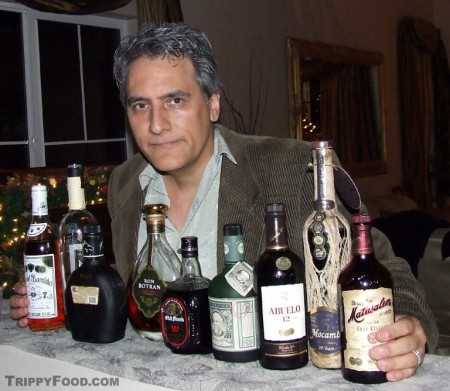
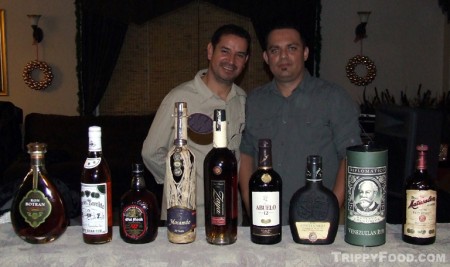
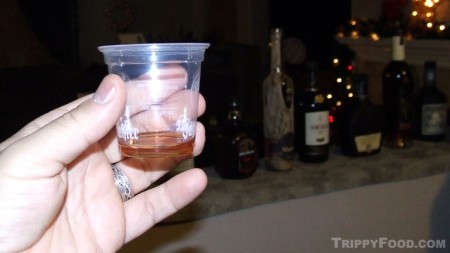
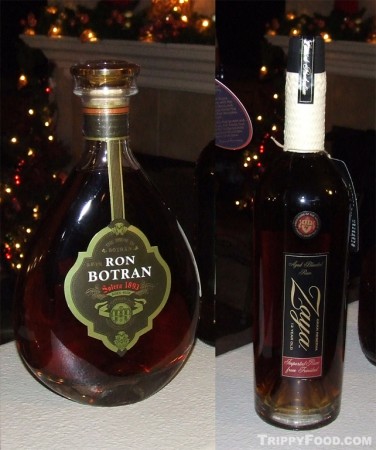
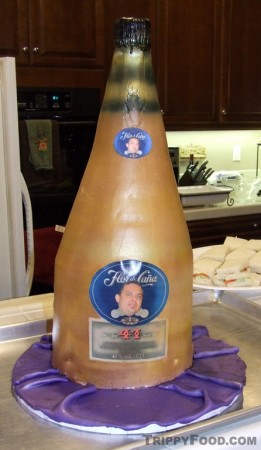

Great piece, very informative and well written as always! For connoisseurs, Pussers rum is another worth checking out. Pussers was the official rum of the British Royal Navy and the “Father of Grog” from 1655 to 1970. It was made available to the public in 1979…interesting story on the Pussers site (http://www.pussers.com/t-rum.aspx).
Pussers was the inspiration for the BVI drink the “Painkiller” originating at the Soggy Dollar Bar, Jost Van Dyke BVI (story at http://www.soggydollar.com/soggydollarbar/).
I was so enamored by Pussers and the Painkiller that I wrote a song (that I’m hoping Pussers will pick up on!). Video going up on YouTube this afternoon…uncanny timing as I recorded it this morning and then saw this article.
Enjoy and thanks!
Matt
I think I opened a can of rum-soaked worms here – keep ’em coming and I’ll try them now that I have a place to start. Thanks for the recommendation, Matt – sounds like you know your rum!
Link to Painkiller music video…cheesy but fun! http://www.youtube.com/watch?v=X9kSWwRcLq8
Or search YouTube “Painkiller by Matt McKay”
Thanks!
Awsome article!! Though not mentioned, I am giving honorable mention to ‘Aguardiente’ from Colombia. Who knew it was a rum! and I’m from Colombia!
Love the cake!
I think Aguardiente deserves its own article, and I will probably do it in Spanish (after a few Aguardientes, of course)
Check out Matt McKay’s video on the link above – makes a great soundtrack while you’re reading the article.
I’m having some rum in your honor tonight. Well, really I’m just using you as an excuse to get a little blotto. Happy Holidays!
Happy Holidays! Wow – this is a really good way to explain to people that don’t know anything about rum on how to enjoy drinking top shelf rum. Daniel and I have been drinking good rum for many years and there is nothing to compare to it. I also recommend you try Flor de Caña; it is from one of the most decorated rum distilleries in the world and has been that way for over a hundred years. The 18 Year Centenario is the top of their range and is enjoyable straight, on ice or in a mixed drink. I’ll bring over a bottle at our next rum tasting. Unti next time, Pura Vida from the real rum drinkers!
I was one of those people who knew little about rum. Thanks for turning me on to the good stuff!
Kracken is a great rum I tried a while back. It’s kind of sweet and tastes almost like there’s a hint of cola already in it. The bottle is awesome as well.
http://www.krakenrum.com/
I’ll have to be crackin’ open a bottle of that soon; thanks for the tip.